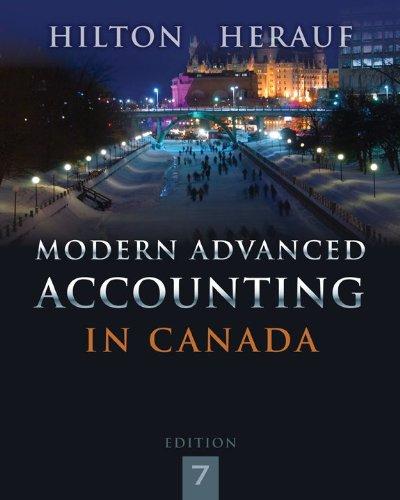Paper Corp. purchased 70% of the outstanding shares of Sand Ltd. on January 1, Year 2, at
Question:
-1.png)
-2.png)
Additional Information
€¢ During Year 5, Sand made a cash payment of $2,000 per month to Paper for management fees, which is included in Sand€™s €œMiscellaneous expenses.€
€¢ During Year 5, Paper made intercompany sales of $100,000 to Sand. The December 31, Year 5, inventory of Sand contained goods purchased from Paper amounting to $30,000. These sales had a gross profit of 35%.
€¢ On April 1, Year 5, Paper acquired land from Sand for $40,000. This land had been recorded on Sand€™s books at a carrying amount of $20,000. Paper paid for the land by signing a $40,000 note payable to Sand, bearing yearly interest at 8%. Interest for Year 5 was paid by Paper in cash on December 31, Year 5.
This land was still being held by Paper on December 31, Year 5.
€¢ The fair value of consolidated goodwill remained unchanged from January 1, Year 5 to July Year 5. On July 1, Year 5, a valuation was performed, indicating that the recoverable amount of consolidated goodwill was $3,500.
€¢ During the year ended December 31, Year 5, Paper paid dividends of $80,000 and Sand paid dividends of $20,000.
€¢ Sand and Paper pay taxes at a 40% rate. Assume that none of the gains or losses were capital gains or losses.
Required:
(a) Prepare, in good form, a calculation of goodwill and any unamortized acquisition differential as of December 31, Year 5.
(b) Prepare Paper€™s consolidated income statement for the year ended December 31, Year 5, with expenses classified by function.
(c) Calculate the following balances that would appear on Paper€™s consolidated balance sheet as at December 31, Year 5:
(i) Inventory
(ii) Land
(iii) Notes payable
(iv) Non-controlling interest
(v) Common shares
d) Assume that an independent business valuator valued the non-controlling interest at $30,000 at the date of acquisition. Calculate goodwill impairment loss and profit attributable to non-controlling interest for the year ended December 31, Year 5.
Goodwill is an important concept and terminology in accounting which means good reputation. The word goodwill is used at various places in accounting but it is recognized only at the time of a business combination. There are generally two types of... Financial Statements
Financial statements are the standardized formats to present the financial information related to a business or an organization for its users. Financial statements contain the historical information as well as current period’s financial... Consolidated Income Statement
When talking about the group financial statements the consolidated financial statements include Consolidated Income Statement that a parent must prepare among other sets of consolidated financial statements. Consolidated Income statement that is...
Step by Step Answer:

Modern Advanced Accounting In Canada
ISBN: 9781259066481
7th Edition
Authors: Hilton Murray, Herauf Darrell





